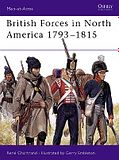On re-reading my post of yesterday, I realised that I hadn't included half the things I wished to and had just produced a somewhat lacklustre potted history of the battle.
For those of you who would like to know more, I recommend Christopher Hibbert's brief volume on the battle. This is classic Hibbert stuff, merging a well written and clear narrative with an admirable eye for personal stories, nor does he flinch from describing the appalling breakdown in discipline and control that occured on the retreat. Recommended.
Of course, for them as like to lift a heavier weight of paper, there is Volume One of Sir Charles Oman's History of the Peninsular War. It is an excellent book, but be warned - I have never met anyone who was able to buy just one volume of this work.
But returning to the game...
We played this several times and I believe the honours were about even. I remember two battles clearly - the first resulted in a messy scrap around Elvina which both sides simply trading blows until someone broke. Both players were new to the game and this precipitated an infantry bloodbath with virtually no involvement by the other arms. I think the issue there is that new players, particularly if they are Command & Colours veterans, rarely grasp the effect of casualties reducing firepower until they've played the game.
I found it interesting that both players were aware of this intellectually and had had it highlighted to them prior to the game, but didn't really seem to take it onboard until they had tried their old tactics and failed. A life lesson there perhaps.
The second battle saw a repeat of the abortive French assault on the centre, which was followed by a British assault on the left which was spectacularly successful, mainly I believe because the British player grasped that reducing the overall strength of the force infront of him was more advantageous then trying to pick of individual units.
The French then tried to press the British right with a cavalry charge that lost some of its punch through sloppy execution. The British formed square and as the French were unable to bring guns or infantry to bear on the squares, the French cavalry were seen off.

French counterattack at Piedralonga
The second battle saw a repeat of the abortive French assault on the centre, which was followed by a British assault on the left which was spectacularly successful, mainly I believe because the British player grasped that reducing the overall strength of the force infront of him was more advantageous then trying to pick of individual units.
The French then tried to press the British right with a cavalry charge that lost some of its punch through sloppy execution. The British formed square and as the French were unable to bring guns or infantry to bear on the squares, the French cavalry were seen off.
The lessons that have been learned
- unsupported infantry advanced are a decidedly chancy business and generally lead to bloodbaths decided by dice rather than skill.
- cavalry charges should be supported by foot or guns in order to exploit infantry squares, also the timing of attacks (with regard to cavalry overrun) needs to be carefully considered.







































Interessting article, seems author cought main flavour of the game.
ReplyDeleteAnyway today am gonna have a battle on this map and I still didnt get clearly how can I win it ))
Sorry for my English, working on it )
I think the French player should try to bring his combined arms advantage into play particularly on the left. Tie the British players hands by forcing him to form square and then assault his line.
ReplyDeleteThe British player is in more of a pickle - the decision is whether to contest the line formed by the river/buildings or allow the french player to advance and over extend himself.